How to Create a Co-Branded CPG Product in 2022
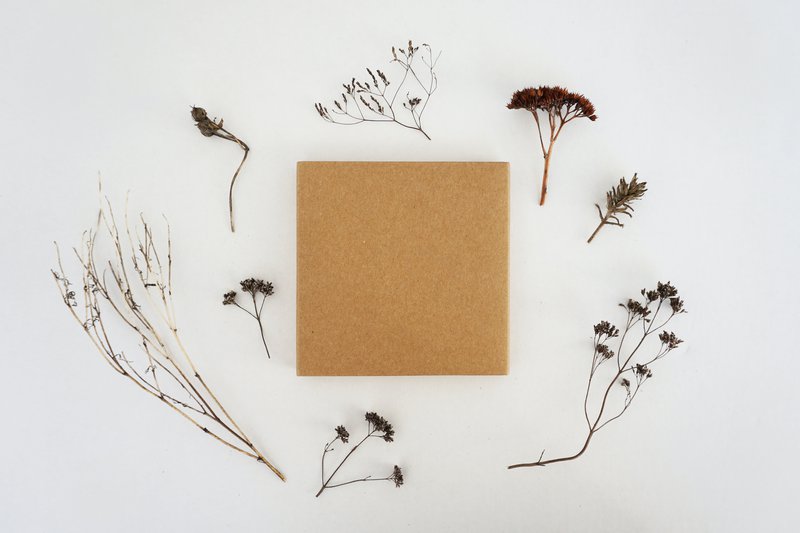
We’ve been touting the strength of partnership marketing from the very second Parsnip came into existence four years ago. We experienced and believed (and continue to believe!) that partners are one of the best ways to grow your product or service; we have sung the praises of all the great partners over the years. (Here’s looking at you, events that always put logos on their materials; influencers that stay true to their commitments; brands that pay for appropriate placement; giveaways that go off without a hitch because every coordinator stuck with a deadline…).
Through all our experience facilitating and observing partnerships, we’ve felt that one of the dreamiest examples of partnership marketing comes in the form of a co-branded product. Truly, creating a co-branded CPG product is that unicorn of partnership marketing. It involves so many pieces working miraculously together, so when a co-branded CPG product hits the shelves, it deserves some applause, even if it misses the mark (check out our many ‘Sweet and Sour’ blogs to learn more about partnerships that work and those that… not so much).
BUT. Partnership marketing looks different in 2022. There are new platforms. There are events that need to function both IRL and virtually. DTC CPG brands have exploded with the loss of foot traffic in retail and the growth of Shopify, Instacart, and all the various technologies that make getting your CPG product into the hands of a consumer completely… seamless. So how do you create a co-branded CPG product in 2022?
Get Crafty – And Stay True To Your Values
Honestly, a great brainstorm sesh with your team is the best place to start. Get crafty, get creative! Have fun. Dream big. If you’re making cookies, can you co-brand with an ingredient supplier? If you make headbands, can you co-brand with the color scheme of a well-known food company? If you support a non-profit cause, can you co-brand and include more about them on your packaging? Consider all the inputs in and around your product, as well as how your product may be used as an input in another product: those are all potential co-branded opportunities. And of course, don’t forget to align on values as table stakes for that partnership (we’ve written many a blog post about values-aligned partners, but check out Dating For Brands: Why It's All About The Data for a tactical approach to finding your values alignment).
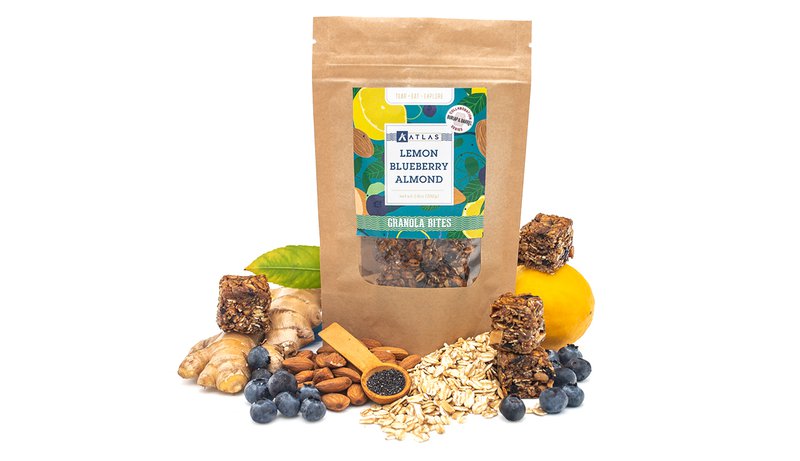
Burlap and Barrel x Atlas Lemon Blueberry Chewy Granola Bites screams of values alignment: authentic, clean ingredients with a care towards how they’ve been grown and cultivated
Share Responsibility – And Write It All Down
Once you’re ready to move forward (we’re assuming you’ve reached out to your potential partners from the first step and you’ve got at least one that is super IN!), it all starts with being totally on the same page with a few things: the goal, the non-negotiables, and who is doing what. At this stage, we suggest you get really clear (Read: write it all down. Draft a Letter of Intent or Contract if that feels right to you) on who is doing what in the creation of the co-branded product, and be sure to share responsibility! Don’t expect to do it all, and don’t expect your partner to do it all. One of the beautiful things about a co-branded product is that each party has some real estate in the branded elements (packaging, website, other marketing, social platforms, etc.), so you can really lean on one another and share responsibility.
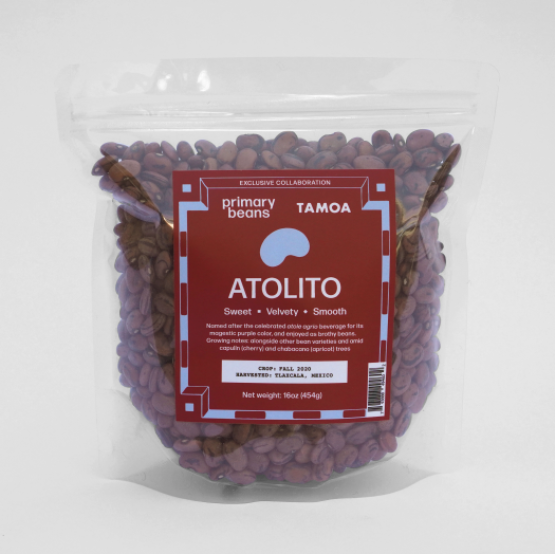
Primary Beans x Tamoa: Atolito beans reflect the partnership between Primary Beans and a small farm in Mexico: they had to share responsibility of getting this packaging right. But most importantly, Primary Beans had to help the farmers understand exactly what to grow and the expectations of the product: “to showcase the flavors and unique heritage of the small-scale, regional farms in Mexico.”
Share Resources – And Keep It Simple
Part of dissecting the dispersion of responsibilities will undoubtedly include how each partner is best-resourced. If you’ve got a great marketing team or packaging designer, and your partner doesn’t, that’s likely a natural place to go ahead and own that portion of the effort. We strongly encourage you not to reinvent the wheel here, but instead stay true and aligned on who is best resourced to take on certain responsibilities. If you’re working with a co-packer that can bring in a new ingredient in a recipe, fantastic! Speak up. If you’re working with a social media team that can’t take on any additional new collateral creation in the month you’re launching, speak up. This co-branded product will come to life in a friendlier, easeful manner if you’re clear (and ask the same of your partner) about where you have the strongest resources to contribute to the creation of the product. And you know what, if you both are well resourced in the same areas and not in some key areas, perhaps it’s not the best partnership to move forward with… now. Keep your options open.
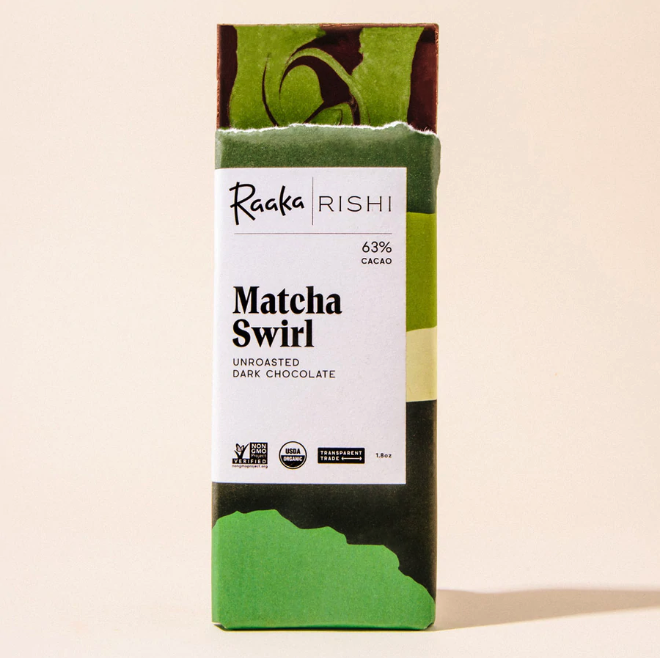
Raaka x Rishi Tea Matcha Swirl Bar is a beautiful example of sharing resources: Raaka has a history of producing collaborative bars (that Rishi logo/name recognition in the upper right of the bar wrapper is exactly where they include every partner’s logo/name), and Rishi as a tea supplier is able to produce a resource they have as a strength.
Fewer Gimmicks Do The Trick – And Don’t Waste Your Time
Consumers are burnt out on Giveaways and Influencer tricks. It’s time to move beyond your giveaway-of-the-week-at-all-costs-to-get-followers mentality and actually think critically about your partners. Yes, at some point when Instagram wasn’t as mature of a platform, follower-gaining techniques were ubiquitous in brand-building. But now is the time to breathe for a hot minute and actually just get really clean on values, responsibilities, and resources with your partner… and just create a clean, beautiful co-branded product in 2022. You and your partners now both have the ability to advertise, market, and sell that co-branded CPG product in a variety of channels, so just stick with that. Less gimmicks, more selling based on the needs of your customer: great, values-aligned co-branded CPG products.
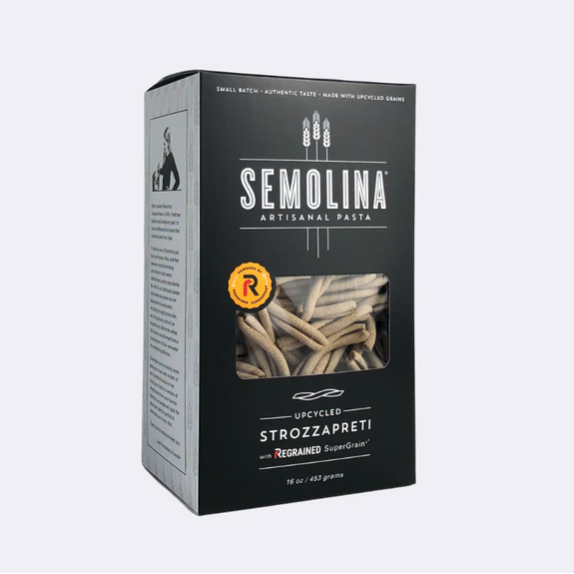
Upcycled Strozzapreti with ReGrained SuperGrain+ is a beautiful example of no gimmicks: Semolina Artisanal Pasta gets creative with ReGrained spent grain in this dry pasta, and they aren’t trying to do anything more. No giveaways, gimmicks, or suspicious marketing. Beautiful value alignment, and a fun alternative to a standard dry pasta!
As always, don’t forget to thank your partners, showcase their logo/name/brand attributes on your packaging/marketing, and eliminate the extraneous giveaways and gimmicks.
Excited about your co-branded product? Send us a note!


